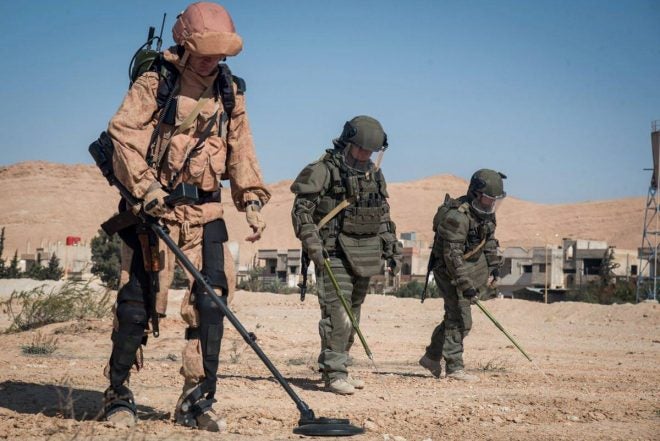It seems that human augmentation devices have seen their first practical application. Passive exoskeletons – perhaps less glamorously called “full body orthopedics” have been spotted in use by Russian sappers in Palmyra, Syria. The sappers – Russia’s equivalents to Western bomb disposal or explosive ordnance disposal (EOD) units – were wearing structural exoskeleton suits reportedly designated “K2”, shown in the videos below:
Like all practical modern exoskeletons, the Russian K2 exoskeleton is passive only – it has no power source. Instead, it is essentially a structural frame that takes the load off the soldier’s back in exchange for a little extra weight and perhaps less speed. The usefulness of these exoskeletons for the infantry is unfortunately limited due to their lack of power. For the sappers and bomb disposal units, however, these suits are a step up. Power to weight is less of a concern, and the stability of the suit in supporting their immensely heavy bomb resistant armor is likely a great additional comfort, and probably pays dividends in added mental focus and dexterity as well.
It may be some time before the infantry of tomorrow will reap the full benefits of a powered exoskeleton suit, but as frustrating as the problem of cramming an adequate power source into a human-sized exoskeleton is, we are closer than ever before to a solution. The fact that passive exoskeletons have to some degree become a reality hints at just how far the materials and human kinesthesiologic sciences have come.
And who knows, maybe the Mobile Infantry will be “on the bounce” in their gorilla-esque powered armor sooner than we think.
 Your Privacy Choices
Your Privacy Choices
